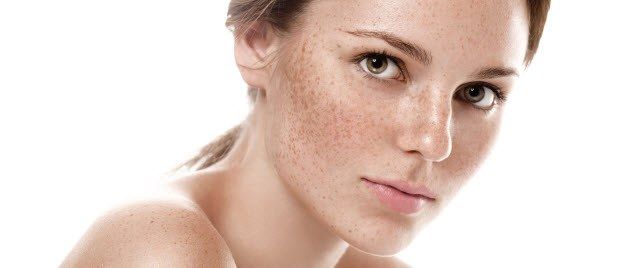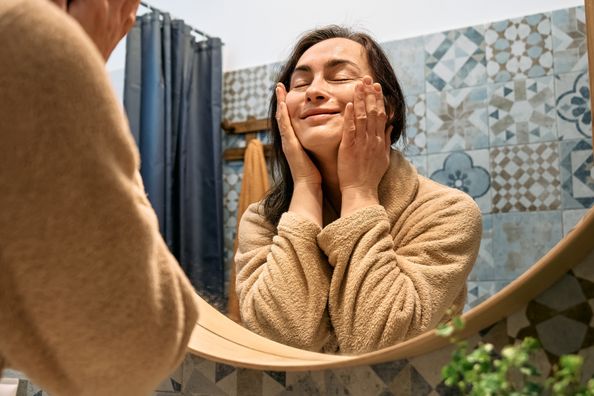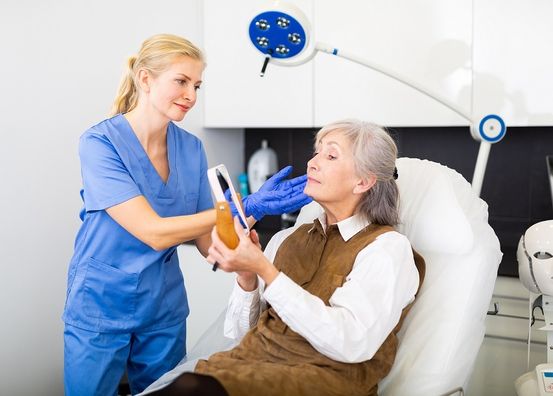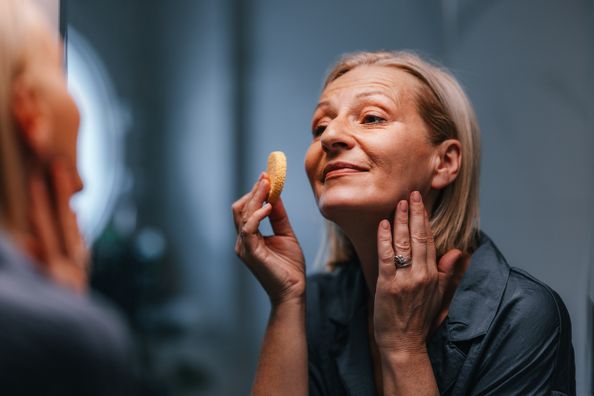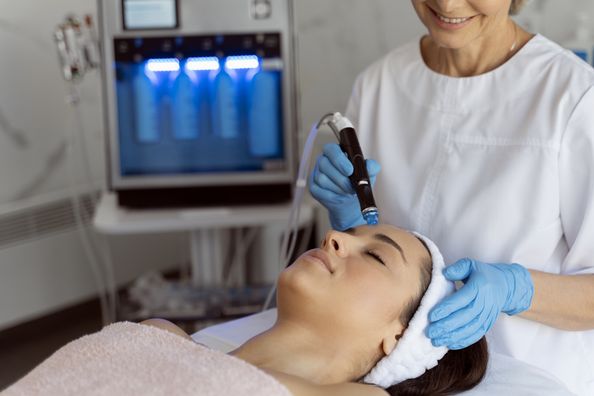When you were young you may have developed cute freckles on your nose and cheeks, but as you have gotten older their cuteness has faded. Sun exposure over the years definitely takes its toll on your skin and those freckles start looking more like age spots or a variety of other skin conditions. Many of these spots may fade a little by avoiding the sun, but usually don’t disappear on their own.
Did you know that those spots don’t have to be permanent? Many changes in your skin from sun exposure can be treated with various laser procedures which can bring back the youthfulness of your skin.
Learn more about the various skin conditions treatable with lasers:
- Freckles: discrete brown spots composed of concentrated pigment that occurs on the face, neck, shoulders, arms, and backs of the hands. Freckles often darken with sun exposure in the summer and fade in the winter and are generally seen on those with fair complexions.
- Sun spots: discrete large brown spots often located on the backs of the hands and face. Sun spots typically appear at a later age, mostly on those who experienced long-term sun exposure.
- Uneven skin tone/pigment: sun exposure is the main cause of uneven skin tone. Brown spots contributing to skin discoloration can often be subcategorized as either freckles or sun spots (see above).
- Melasma: dark brown-to-tan patches on the face frequently affecting darker-complexioned individuals. Sun exposure is the primary trigger for melasma. Female hormone changes, often during pregnancy, oral contraceptive use, or hormone replacement therapy at menopause can also trigger melasma.
- Broken blood vessels: prominent superficial dilated capillaries found on the cheeks and around the nose as a result of previous sun damage. There may also be a hereditary component resulting from a common condition called rosacea.
- Diffuse background redness: chronic sun exposure may lead to a ruddy complexion. In addition, a genetic condition called rosacea may lead to a similar appearance that is exacerbated with exercise, spicy foods, hot beverages, alcohol and sun exposure.
- Fine lines and deeper creases (aka wrinkles): wrinkles are the result of repetitive contraction from underlying facial muscles as well as changes in the overall skin composition due to chronic sun (UV) exposure. Other factors such as daily oxidative damage and smoking can also contribute to the deepening of facial lines.
- Precancerous spots called actinic keratoses (AKs): rough, dry pink spots often on the face, scalp and arms are caused by cumulative years of sun exposure. Left untreated, AKs may turn into a type of skin cancer called squamous cell carcinoma.
During your initial consultation, a personalized treatment plan will be developed based on the needs of your skin. Most skin conditions typically require a series of laser treatments to achieve the best results. Many patients also combine laser techniques with Botox or fillers to fully reverse the signs of sun damage/photo-aging.
In addition, to maintain the results achieved from the laser procedure, a personalized at-home skincare regimen is recommended and developed with the help of our knowledgable estheticians.
Health Topics:

